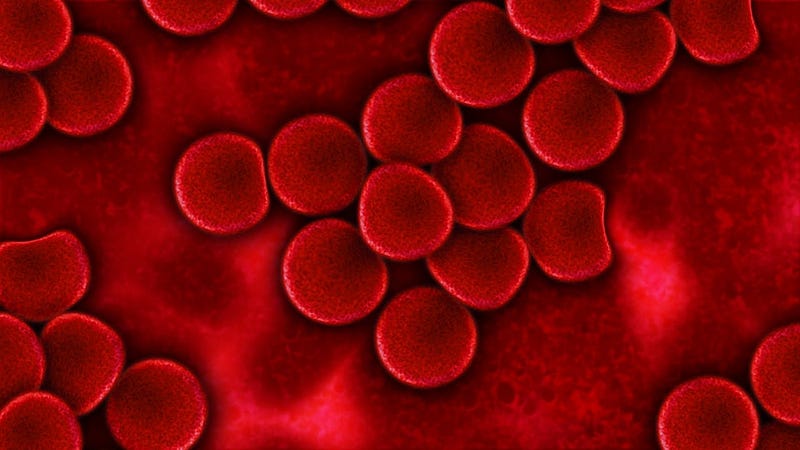Understanding the Complexities of Blood Transfusions
Written on
Chapter 1: The Basics of Blood Composition
Blood, often regarded as a mysterious red fluid, is not exclusive to humans. Every mammal, reptile, bird, fish, and amphibian has iron-rich red blood circulating throughout their bodies. However, human blood cannot be interchanged with that of animals, such as pigs. Despite their similar appearance, transfusions can only occur within the same human blood type.
What distinguishes one blood type from another? And how can we identify the source of a blood sample?
Blood is an intricate substance. While it may seem like a uniform red liquid, it is, in fact, a complex mixture of various cell types.

The most prevalent cell in our blood is the red blood cell, which derives its color from iron found in hemoglobin. This iron plays a crucial role in oxygen transport throughout the body. In terms of volume, blood comprises approximately 50-60% plasma, which is a mixture of water, proteins, antibodies, sugars, and fats; 40-50% red blood cells; and about 1% other components, such as white blood cells and platelets that assist in clotting.
Each of these elements is specific to the organism it comes from, with red blood cells serving as the primary differentiator.
Section 1.1: The Lifespan of Red Blood Cells
Red blood cells are remarkable in that they have a short lifespan of just a few months, necessitating continuous production. They originate from stem cells located in the bone marrow, similar to cars being manufactured in a factory.
When these cells first emerge from stem cells, they contain a nucleus that holds genetic material. However, as they mature, they discard this nucleus to accommodate more hemoglobin for oxygen transport. The mature red blood cells that circulate in our blood are essentially "bags" filled with hemoglobin.
Despite this simplification, red blood cells maintain certain markers on their membranes that allow white blood cells to recognize them as part of the body.
Subsection 1.1.1: Blood Typing Mechanism
Red blood cells are unique due to glycosyltransferase enzymes that come in two forms: A and B. The presence of these enzymes determines blood type:
- Type A: Produces glycosyltransferase A
- Type B: Produces glycosyltransferase B
- Type AB: Produces both A and B
- Type O: Produces neither
Additionally, the Rhesus (Rh) factor, particularly type D, further classifies blood as positive or negative. For instance, someone with A+ blood has both glycosyltransferase A and the Rh factor.
Chapter 2: The Distinction Between Human and Animal Blood
The video titled "Big Idea: Blood Transfusions" provides insight into the importance of blood types and how they affect medical practices. It delves into the complexities of transfusions and the compatibility issues that arise between different species.
Human blood is visually indistinguishable from that of other animals; both contain similar components. However, the molecular structures within blood cells vary significantly between species. These differences are critical because when human immune systems encounter foreign blood cells with dissimilar surface proteins, they react aggressively, often resulting in severe consequences.
This reaction underscores the reason for strict compatibility requirements in blood transfusions. Type O- blood is often labeled as a universal donor, as it lacks the glycosyltransferase and Rh factor, avoiding triggering the recipient's immune response. Conversely, individuals with AB+ blood can receive from any type, as their bodies recognize all glycosyltransferase variants.
In forensic science, this immune response has proven useful. In the early 1900s, scientists developed methods to isolate immune serum from rabbit blood that specifically reacted to human blood, aiding criminal investigations. Today, advanced techniques utilize lasers to analyze blood samples, identifying species through their unique surface proteins.
Section 2.1: The Future of Blood Transfusion Compatibility
Blood types showcase the unique protein signals that our bodies use, which remain undetectable to the naked eye. These proteins reflect our individuality while serving as a defense mechanism against potential threats.
Although this complexity limits potential blood sources for transfusions, promising research is underway to find ways to strip foreign identifiers from blood. This could open the door to using blood from any individual, and perhaps even from animals, for medical purposes.
In the future, it may become commonplace for individuals to tout the strength of various animal blood running through their veins!
The second video, "Weighing the Risks and Benefits of Blood Transfusion," discusses the potential complications and considerations involved in blood transfusions, providing a balanced view of their medical implications.
Note: An earlier draft of this article did not sufficiently clarify that only the presence of foreign antigens triggers immune responses during blood transfusions. Thanks to Rob Hungerford for the correction!